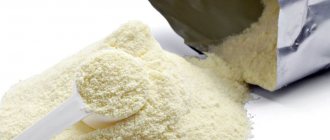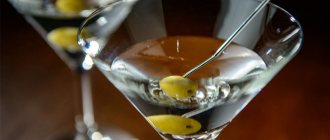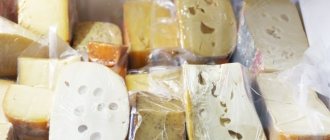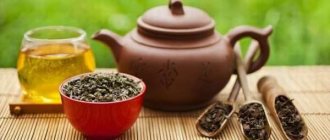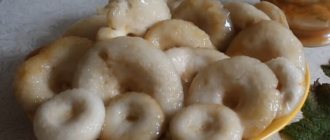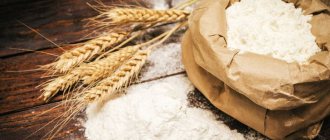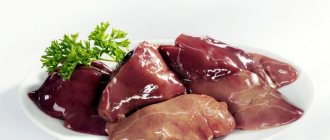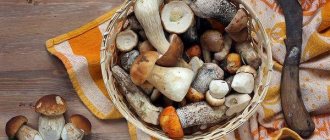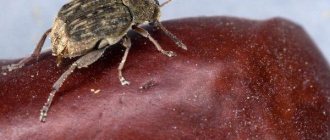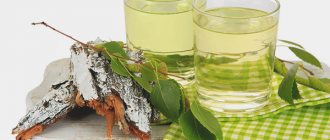Myths and reality
Champagne is often associated with wine, and people just as often confuse the characteristics and shelf life of these drinks. Therefore, there are several beliefs that should be forgotten.
No. 1. "Immortal life"
“The older the better” does not apply to champagne. Even for wine, about which this can be heard more often, this statement does not always apply. Without appropriate quality manufacturing and storage technology, the taste is lost after a couple of years.
No. 2. Trust the label.
On the one hand, you cannot trust too long intervals, because they can be indicated in the expectation that all the nuances will be observed. On the other hand, if the label indicates 1 year, then this may also not be entirely true - the drink can be stored for all 3 years, the manufacturer simply does not trust the peculiarities of transportation and storage in stores, and therefore reduces the permissible time in order to protect consumers from negative emotions.
What determines the storage duration?
The unique and exquisite taste of champagne is given not by people, but by living organisms.
Even after sealing the bottle, all microorganisms (yeast) in it do not die, but go into deep hibernation. By choosing the wrong storage conditions, you can activate their vital functions, which will negatively affect the taste. The main task is to comply with the criteria for the dormancy of microorganisms inside the bottle. The following explains whether the drink has a shelf life and how many years an unopened drink can be stored in a closed bottle. Shelf life directly depends on the percentage of alcohol in the wine, as well as sugars, acids and tannins of natural origin. The approximate storage time for white wines is no more than 3 years, for red wines – up to 10.
If we approach the issue from the legislative perspective, the situation changes somewhat. Most bottles indicate the same period from the date of manufacture - 12-24 months. There is a logical explanation for this. There is a concept of a guaranteed shelf life; during this period, no changes in taste, smell, sediment or other qualities will occur in the composition of the drink. This is achieved by adding sulfur and preservatives that stop the development of bacteria.
Closer to the end of the shelf life, their effect weakens. This drink can be consumed after the specified date. But its taste will be different from freshly made champagne. While some wines benefit from these changes (this is called “aging”), the taste of others will be hopelessly spoiled.
Important Terms
So what are these conditions that constantly influence the question “ does champagne have an expiration date?” has expired is not as important as compliance:
- temperatures 10-12 degrees;
- humidity over 75%;
- a dark place, maximally protected from sunlight;
- horizontal position (protects against drying out of the plug with subsequent violation of its tightness)
Several conclusions follow from this. Firstly, a dark bottle does not try to hide defects, but protects from excess light, prolonging the freshness of sparkling wine. Secondly, a young drink is better than an old one. Thirdly, home storage for more than two months is not recommended.
Oddly enough, it is most difficult to answer what the expiration date of champagne is if it is expensive. Well-produced and sealed drinks can be stored for about 25 years. The word “quality” means:
- Using classical technology, which involves ripening in a special container.
- The presence of premium grade grape juice, without an abundance of unnecessary additives that spoil the taste.
- Compliance with general manufacturing technology.
- Compliance with the holding period during production.
- Balanced amount of sugar.
- Availability of additional protective covers or tubes during transportation.
How to understand sparkling?
Lovers of this drink owe the appearance of champagne to the winemakers of the French province of Champagne.
Here and only here real champagne .
And this is due not only to the “copyright” of local winemakers to the name of the sparkling wine, but also to strict adherence to a special set of rules governing its creation.
These rules cover a fairly significant period of time from planting and specific processing of the grapevine, to a special degree of pressing the grape berries and observing the optimal time for aging the wine on the lees.
Therefore, all other sparkling wines produced in our country, Canada, the USA, Italy, Spain and some other countries, and called “Champagne”, are such only by name, but not by content.
It is clear that the closer the drink is to the original recipe , the subtler its taste. However, winemakers in many countries produce fairly decent sparkling wine under the “Champagne” brand. This wine is divided into main categories:
Extra brut, ultra brut, brut naturale - the highest category, does not contain sugar at all. A drink for gourmets who believe that sugar distorts the taste of real champagne.
- Brut is very dry, the sugar content does not exceed one and a half percent.
- Extra dry – very dry, sugar percentage from 1.6 to 2.
- Sec – dry, from 2.1 to 4% sugar.
- Demi-sec – semi-dry, from 4.1 to 8% sugar. Slightly pronounced sweetish taste.
- Semi-sweet – about 10% sugar. Quite noticeable sweet taste.
- Sweet – about 12% sugar. Strong sweet taste.
Sparkling is quite varied in color. It depends on the grape variety from which they are produced.
The lightest is made from white Chardonnay. Pinot noir and pinot meunier produce richer colors.
The technological process for the production of some wines involves mixing white, red and black grape varieties with each other. The result is pink and red sparkling drinks of different shades.
What products cannot be returned or exchanged? Find out the answer right now.
How to choose
All acquired knowledge is necessary for further selection.
- When choosing an elite drink, it is important to make sure that you are not purchasing a fake. This can be judged by the label and tracking the quality of the packaging as a whole.
- After this, you should check the tightness - the integrity of the wire, the absence of cracks in the plug.
- It is better to avoid bottles displayed on racks or display cases. It is especially important to follow this rule when choosing a specific variety or an expensive brand that could have been on the shelf for a long time.
- It’s great if you can find the variety still sealed. Something you can often notice in boxes is that such specimens have clearly suffered fewer violations of the rules.
- Dark glass is better than clear glass, no matter how much this contradicts some aesthetic considerations. The darker it is, the higher the protection from the light of the sun and lamps.
- It is better to choose a bottle that is no more than halfway through its expiration date.
If these conditions are met, there is a chance to get delicious champagne that has not lost its quality during transportation and being in the store.
Signs of damage
As for champagne, including Soviet champagne, over the years it does not infuse, does not become more noble, like cognac. On the contrary, after the expiration date it begins to oxidize and deteriorate.
Signs that the drink has already gone bad:
- The appearance of sediment. True, it can only be seen if the bottle is made of white glass.
- Color change. It becomes not pale straw (for white), but amber, brownish.
- No carbon dioxide bubbles are released after opening and filling the glasses.
- Strange smell or taste. From fermented, harsh alcohol and yeast to unpleasant chemical overtones.
Only if the storage conditions are observed, champagne will not lose its taste properties and will delight you with beautiful “bubbles” during the feast, it is important to remember this.
At home
When a profitable offer or a rare variety appears on the shelves, and the holiday is still far away, you should take responsibility for safety.
In the room
Even in a dark place, classic varieties are stored for no more than a year. A significant reduction in shelf life should be expected after the room temperature increases to 25 degrees Celsius.
Do not forget that initially champagne should be stored in dark cellars at the appropriate temperature. Therefore, when buying a bottle prematurely, it is better to hide it as far as possible.
In a refrigerator
It would seem that the unit completely replaces specialized bars and cellars. However, there are two points that should not be forgotten:
- The desired temperature is not on the shelves, where it varies from 1 to 7 degrees, but on the door, where there will be no excessive cooling or constant heat.
- The bottle on the door must be placed in a lying position - otherwise the cork will dry out.
Otherwise, the refrigerator is the ideal place.
How and where to store it at home?
To create ideal conditions for storing champagne, you must adhere to the following parameters:
- Temperature from 5 to 20 degrees. In the living room it is about 21-23 degrees, in the refrigerator - 6. In the second case, it is more difficult to control it, since frequent door openings create temperature changes and jumps.
- Air humidity should be 75-85%. If this indicator decreases, the cork on the bottle may dry out and lose its seal. Residential averages fluctuate between 50% in summer and 30% in winter.
- Sunlight exposure and bottle position. It is optimal to store champagne in a horizontal position, in a dark room, out of direct sunlight.
At home, it is best to store it as follows:
- In a cellar or basement. It is dark and quite humid here, you just need to carefully control the temperature. Vintage wine with such indicators can last up to 10-15 years, other wines - according to the time stated on the label.
- In a refrigerator. In this case, the bottle should be wrapped in a dark, thick cloth to prevent light from entering. Since humidity and stable temperature are difficult to maintain in the refrigerator, the shelf life will be equal to that indicated on the packaging (1-2 years).
- In a room without a special system for humidification and temperature maintenance, i.e. in an ordinary living space. Wine may begin to spoil even before the date indicated on the package. High temperature stimulates fermentation processes; sunlight and low humidity also negatively affect taste.
In a closed bottle
How long can it be stored unopened? The shelf life of unopened champagne directly depends on compliance with the following conditions:
- Temperature. Its range should be within 10-15 degrees. When it increases, the activity of yeast is activated and the drink oxidizes; when it decreases, the natural ripening process stops.
Freezing will kill the taste of the drink and it will be impossible to restore it. Changes over 10 degrees have an extremely negative effect on the taste of wine. Several such jumps can completely ruin the taste of a noble drink.
- Humidity. The optimal indicator is 60-80%. A lower level promotes rapid drying of the cork, a higher level promotes the appearance of mold.
- Light. Even artificial lighting can significantly shorten the shelf life of champagne, especially direct sunlight. In such conditions, the wine will spoil in a couple of days.
- Storage method. It is best to place the bottle horizontally to prevent the cork from drying out. It is necessary to exclude vibrations, shocks, vibrations and even loud sounds.
In an open bottle
How long does an opened drink last in the refrigerator and without? After opening the bottle, oxidation processes immediately begin. This happens due to contact with oxygen. The higher the temperature and volume of air inside, the faster the process proceeds. It is impossible to stop it completely; the task is to slow it down as much as possible.
The first changes in taste become noticeable a few hours after opening. The maximum shelf life of such a bottle without refrigeration is 4 hours. After just 2-3 days, opened wine will turn into vinegar.
Open
Champagne is a carbonated drink, and therefore begins to gradually fizzle out when opened. After three hours on the table open, it almost completely loses its quality and also acquires an unpleasant taste.
Moreover, you cannot leave the bottle open on the table as a whole - you need to cover it on top with something thick every time or even return the cork to its place.
If there is a need to preserve the contents of the bottle for another day or two, then you should plug it with a special stopper, which can be purchased in stores, wrap it in cling film for safety and put it in the refrigerator. If necessary, the cork can be replaced with foil twisted into a tight ball.
Once you open the champagne, don’t let the drink spoil, enjoy it!
Rules for choosing sparkling wines
When wondering what wine to buy, it is advisable to understand that the duration and types of storage of natural wines and sparkling wine-based products have significant differences.
Natural sparkling wines contain information about the time of harvest and other characteristics, indicating the exact storage time.
If there are no time restrictions on aging the product, it is not natural and of high quality.
When buying sparkling wine, it is important to understand that a good product cannot have a low price. The price includes guarantees of the quality of the drink, the cost of decent design and payment for the fame of a particular brand that has proven itself in the market for many years. Luxury champagnes are produced to strict standards and have a longer shelf life than their budget counterparts.
Specialized retail outlets that sell alcoholic beverages have appropriate equipment for storing them, which cannot be said about most supermarkets. Therefore, if a fizzy drink is purchased in a regular store, you should opt for the freshest batch of products and consume it within the next 3 months.
Manufacturers' tricks
Often the drink is called “and with crisp wine” instead of “sparkling wine”. This is a manufacturer's trick designed for an inattentive buyer. At the same time, there is a great risk of purchasing a product to which carbon dioxide has been added artificially.
On the label of high-quality champagne there is the inscription “aged”.
Types of sparkling wine
Based on their composition, champagne wines are divided into white, rose, and red. And according to the amount of sugar they are divided into the following types:
- extra brut (no sugar);
- bruts;
- dry;
- semi-dry;
- semi-sweet;
- sweet;
- dessert.
You should choose one or another type of champagne based on your preferences and each specific case. A good combination with various types of seafood, meat, fruits and dry and semi-dry wines .
Semi-sweet champagne is consumed with flour, cheese, and sausages. And drinks with a high sugar content are combined exclusively with confectionery and various types of desserts.
It is more correct to opt for drinks in dark glass containers, which will not allow the product to deteriorate under the influence of light, and thereby will contribute to its long-term storage.
Sparkling wines of good quality are necessarily sealed with a cork stopper rather than a plastic stopper.
What does expiration date affect?
If the expiration date of champagne has expired, this does not mean that drinking it becomes life-threatening. You can tell that a product has already gone bad based on three signs:
- Smell of alcohol or even vinegar when opened.
- Bitterness or sourness in taste.
- A small amount of bubbles.
The safety note primarily concerns natural champagne from reputable producers.
Since sparkling wine is difficult to keep fresh after opening, it should be consumed immediately and preferably refrigerated before doing so. The optimal temperature for this is often indicated on the bottle label.
Champagne is purchased “on occasion”. However, if this incident does not happen, then you should not put off the bottle until the next one in six months. The rich and sparkling taste is evident only in fresh batches. Champagne after its expiration date will no longer brighten up the holiday, and most likely will not justify the waiting time.
655
Is it possible to drink expired champagne?
Drinking expired champagne is more disgusting than harmful. Sparkling wine is full of carbon dioxide molecules. After the bubbles have evaporated, the drink begins to sour, and its taste gives off bitterness.
Very quickly the product turns into a bitter and cloudy liquid with a strange aroma and ceases to give pleasure. Expired champagne should not be drunk for health reasons.
However, if the wine has been in a corked state for less than three years since its production, it is unlikely that they will be poisoned.
